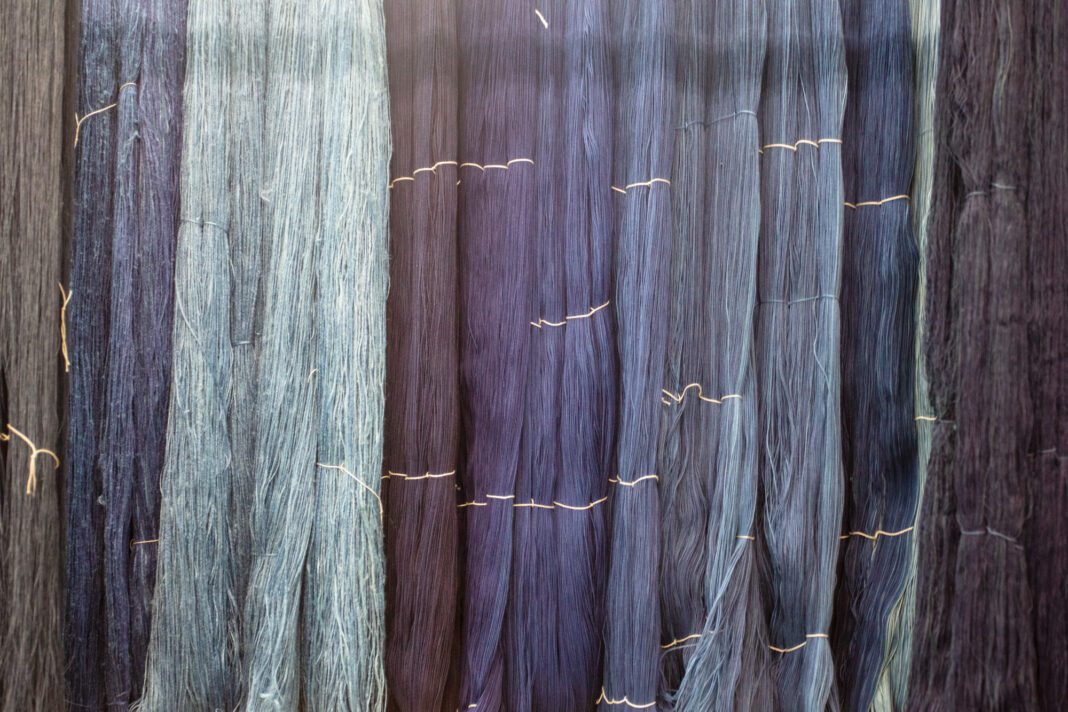It is a sunny day in Gotemba, the getaway to Japan’s highest mountain – Mount Fuji. While the glorious Fuji is entirely visible on this perfectly sunny day and looks very inviting, I am here to experience another side of Gotemba. I will visit one of the few remaining ateliers, Shoaizome Koharaya, where the visitors can experience the traditional way of indigo dyeing and learn about the history of this unique traditional process.
Indigo dyeing is a fabric or thread coloring technique that had its heyday during the Edo Period of Japan (1603-1867). The process results in a color known as Japan blue that many of us may remember from the beautiful color of the jersey that the Japan National Soccer team wore during the 2022 Soccer World Cup.
Table of Contents
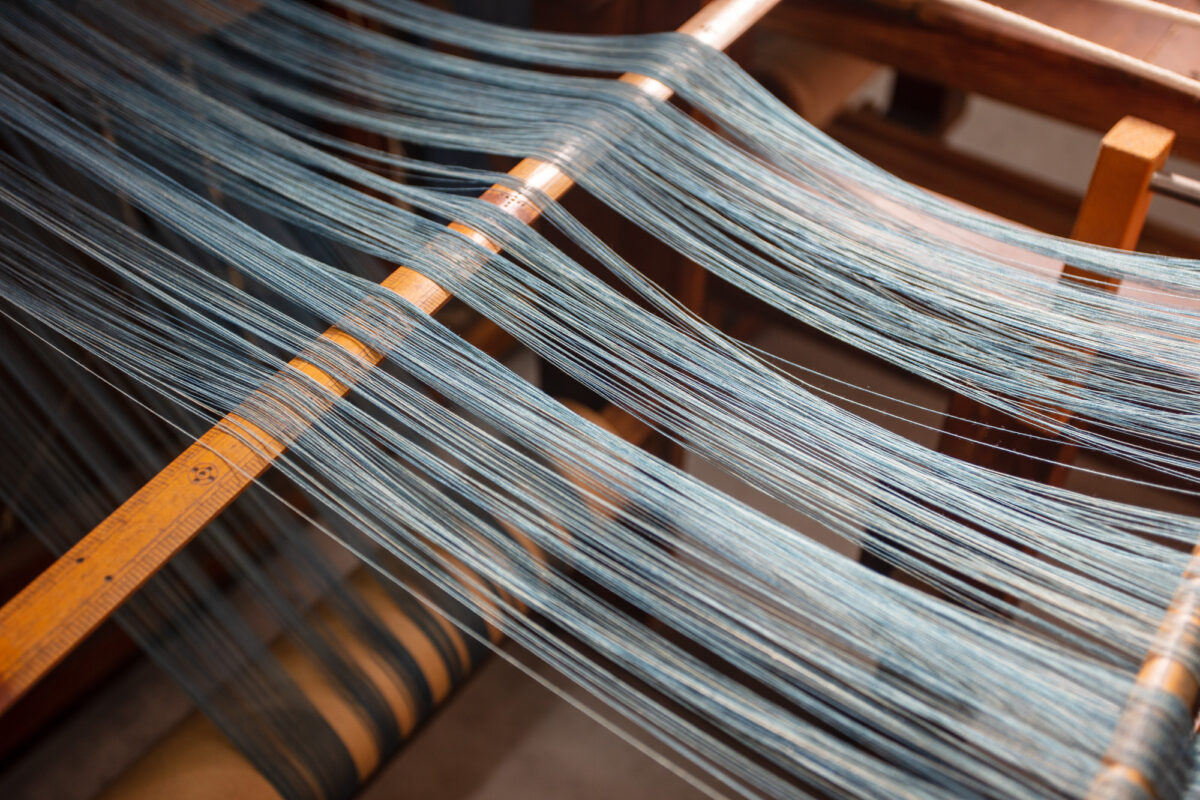
An Indigo Dyeing Atelier as Old as 160 Years
After a pleasant 10-minute walk from the train station, I arrive at Koharaya and am greeted by the master at the door. Rather than an industrial or a business building, this feels like a home. The master, with a heartwarming smile, leads me into his cozy atelier. While I had experienced indigo dyeing in Japan before, right from the start, this experience feels different. I feel like I am being invited into the private studio of an artist to experience the process rather than being part of a more mainstream or commercialized experience. Seeing the drawings produced by the master’s grandkids on the walls ensures me that I am indeed here for a more intimate and special craft experience.
Before trying my hand at the entirely manual dyeing process, we sit around a wooden table where the master explains the history of his studio and the techniques that they use, which make the indigo dyeing practiced here special. Their atelier was initially founded in Matsumoto City in Nagano Prefecture in 1861 towards the end of the Edo Period. Shortly after its establishment, the second-generation members of the family moved the atelier to its current location in Gotemba.
Indigo Dyeing – a Technique That Became Popular During the Edo Period
Referred to in Japanese as “aizome”, indigo dyeing is an old traditional technique that became particularly popular during the Edo Period (1603-1867). The dye is extracted from the indigo plant, which, as the master notes, is a popular ingredient in traditional Chinese medicine. A technique, which was originally praised for the bright and sharp colors that it produces, has – as the time passed – also been recognized for its insect repellent and even deodorizing quality. The master also notes that the thread and the fabric become 50% stronger when dyed with the traditional indigo dyeing technique.
Commitment to Original and Non Harmful Techniques
While indigo dyeing started as an entirely organic technique that didn’t rely on additives and chemicals, the fundamentals of the process changed substantially during the Meiji Period (1868-1912), the age of industrial revolution in Japan that followed the Edo Period. Chemical ingredients were introduced to cut costs and to serialize the process for faster manufacturing. As a result of the industrial revolution that also impacted the traditional indigo dyeing technique, the number of ateliers adhering to traditional techniques was substantially reduced in this period. Koharaya Atelier of Gotemba is one of the rare ateliers where visitors can still experience the traditional process. As a result, the atelier is rightfully registered as a local craft of Shizuoka Prefecture.
The master is, understandably, proud of their commitment to the traditional indigo dyeing process. It is a method which is substantially more environmentally friendly and sustainable compared to synthetic indigo dyeing processes. Koharaya Atelier not only adheres to the traditional techniques that are better for the environment but also does its part to support the shrinking community of the original indigo dyers.
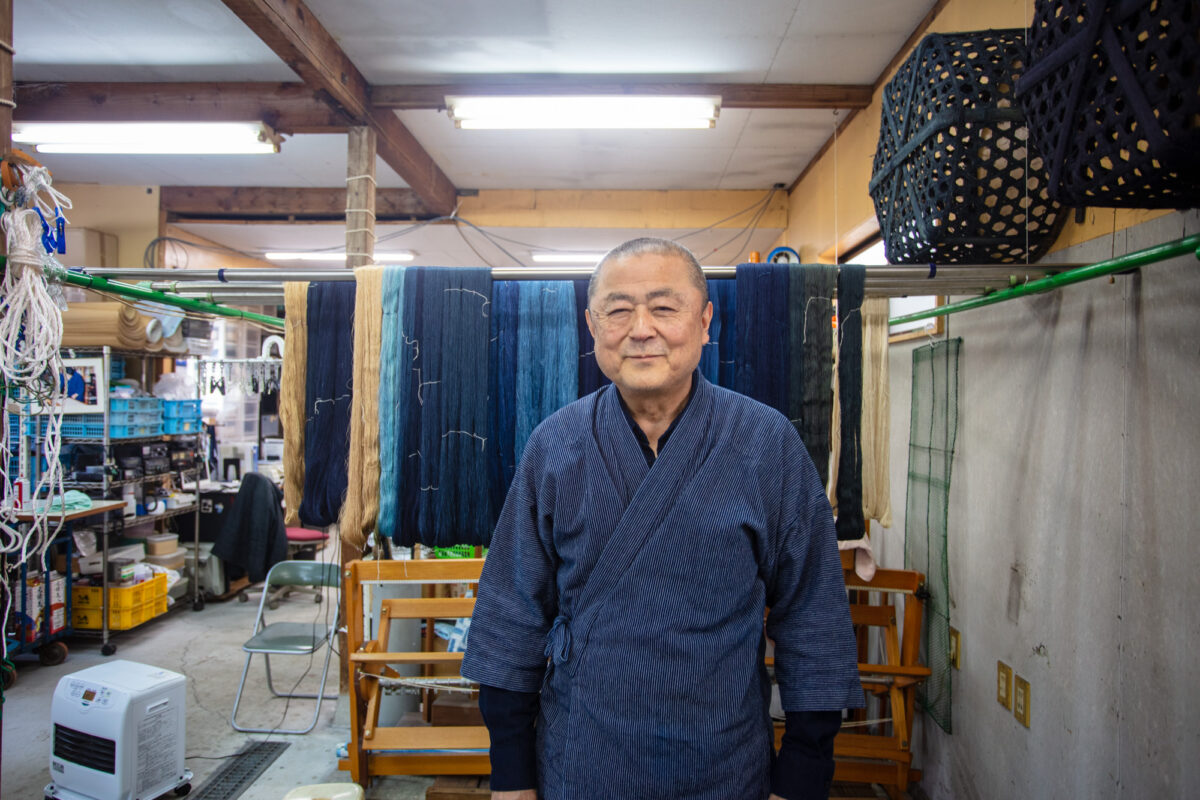
One of the things that never ceases to fascinate me about Japan is the sense of community that manifests itself in many different aspects of life. When the master explains that they continue to buy the dye that is made of fermented indigo leaves from a manufacturer in Tokushima Prefecture on the island of Shikoku to support the manufacturer, I am once again reminded that it is this sense of community, that isn’t only bound by geography but also by crafts, as is the case here, that makes Japan special. It is a country where one can still experience various traditional techniques that, in the absence of this community spirit, may have been long erased from the cultural memory. Tokushima is one of the major centers for traditional indigo dyeing in Japan thanks to the Yoshino River, which runs from west to east of the prefecture and creates an ideal environment for cultivating the indigo plant used in the dyeing process. Hearing about the cooperative spirit that extends from Shizuoka all the way down to Tokushima puts a smile on my face.
Time to Try My Hands on the Indigo Dyeing Process
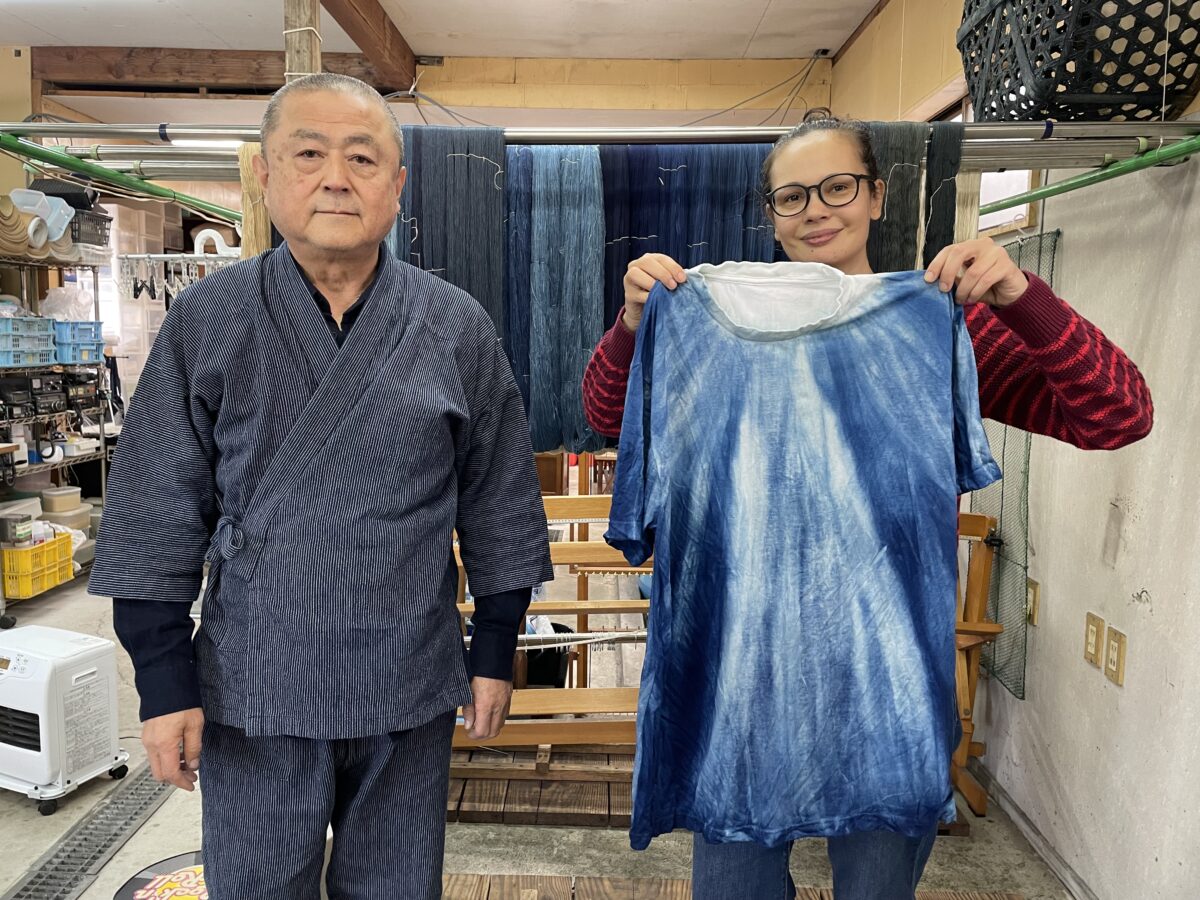
I forget about the time while listening to the master, whose enthusiasm and affection for this unique craft is contagious. It is now time to try my hands at the process.
First, I pick a pattern based on the various samples that are displayed in the atelier to apply to my fabric. As a very modest dresser, I settle on an uncomplicated pattern, but there are many patterns that will make the more fashion forward visitors happy. I pick a t-shirt among many other choices that include handkerchiefs and scarves.
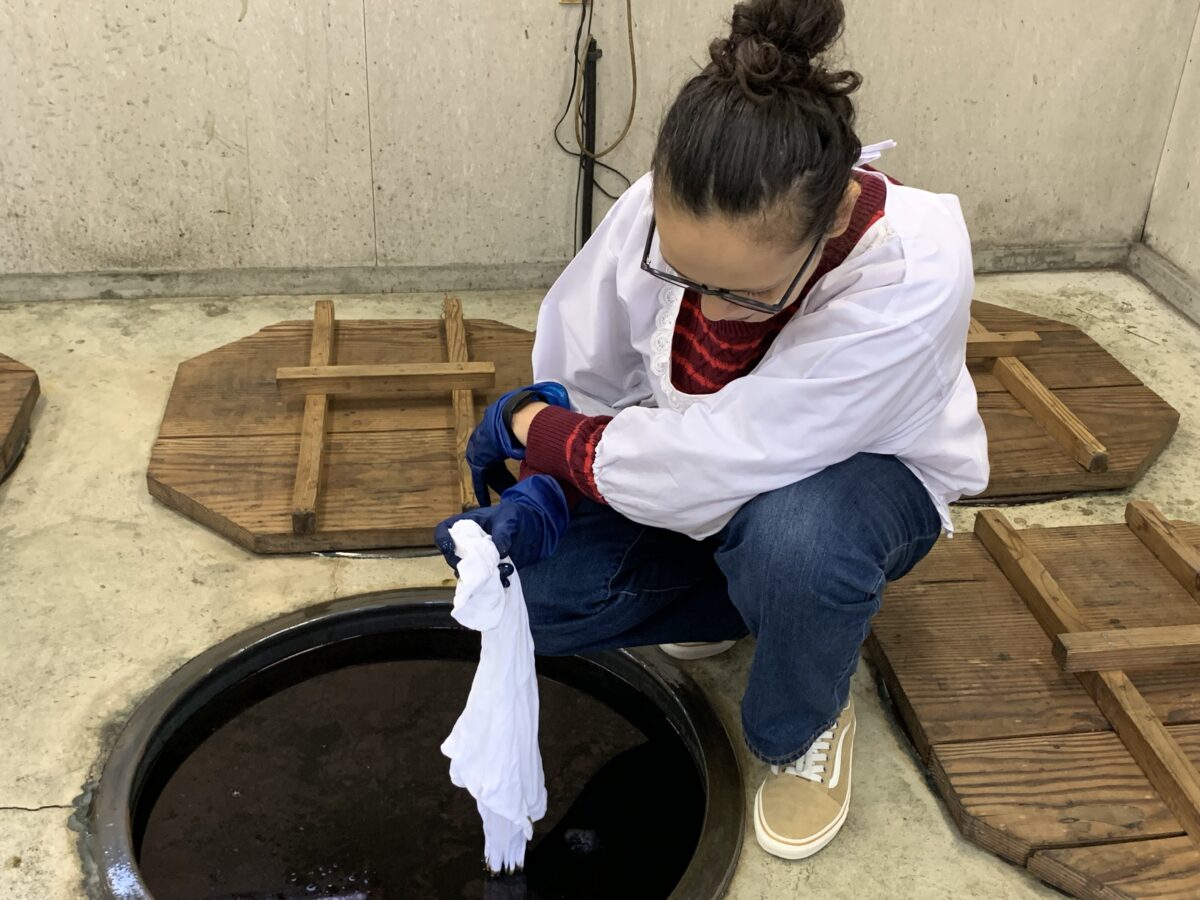
The second stage involves a process that makes me truly appreciate the patience that goes into adhering to manual processes to keep the tradition alive. I roll up the stark white t-shirt and start the process of dipping in the water and lifting it out again. In the beginning of the process, only the lower end of the t-shirt goes into the water held in a small well that contains the indigo dye. The process involves dipping the fabric in the water and lifting it repeatedly. The master guides me through the process and underlines the importance of dipping the fabric into the water and lifting it softly. He also sets up an alarm for 60 seconds and notes that I need to repeat the process ten times.

When the part of the fabric dipped into the water is exposed to the air, it results in a green-brown color.
As my work with the lower end of the t-shirt ends, I move on the second part of the t-shirt and repeat the same process ten times. While the first results are far from the mesmerizing indigo color that dominates the atelier, instead reflecting a greenish and brownish color, it is the final washing process that brings out the indigo blue.
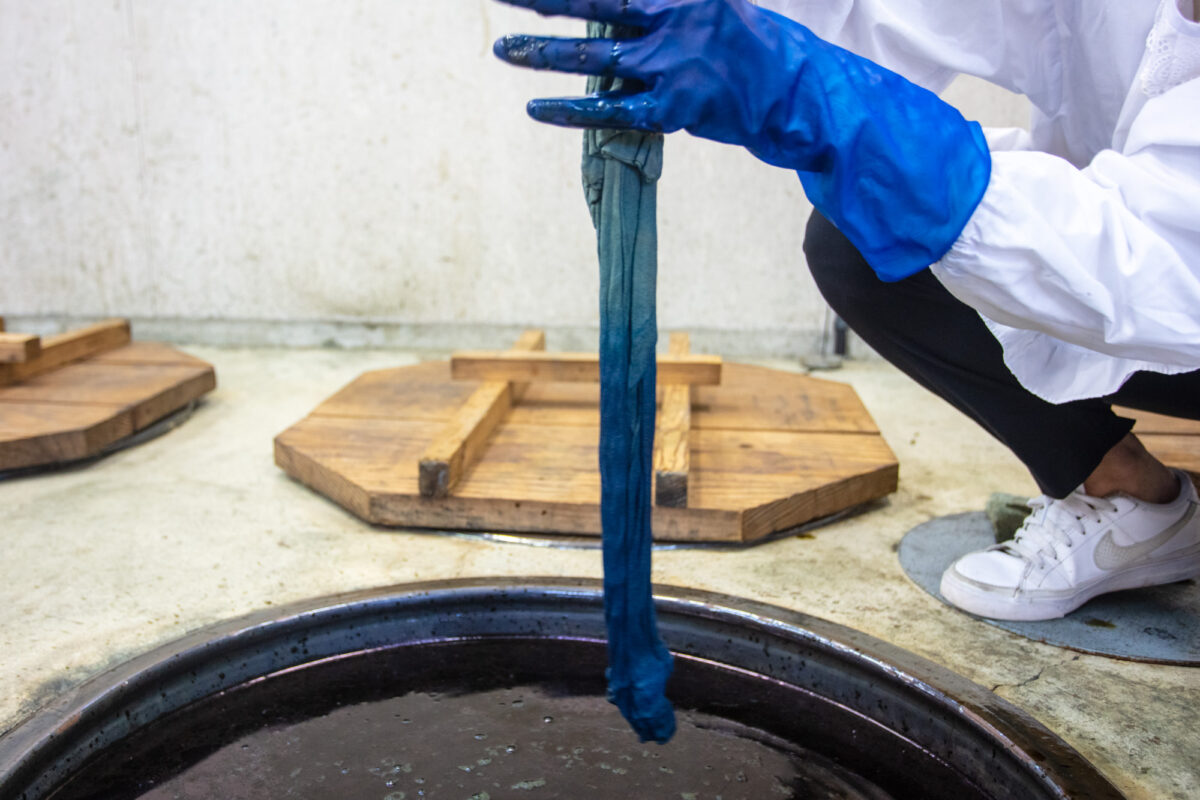
It is fascinating to see the white t-shirt that I picked merely 20-30 minutes ago is now dyed in the alluring indigo blue color without having gone through any machine led process. The entirely manual process where one needs to be individually involved at each stage feels very therapeutic. The ambient lighting in the atelier, the smiling face of the master, and the cozy atmosphere really turn the whole experience into a very relaxing one. After a little over an hour spent at the atelier, it is time to say goodbye. I convey my gratitude to the master for the opportunity to observe his dedication to this traditional craft and be inspired by his efforts to support the remaining community of indigo dyers.
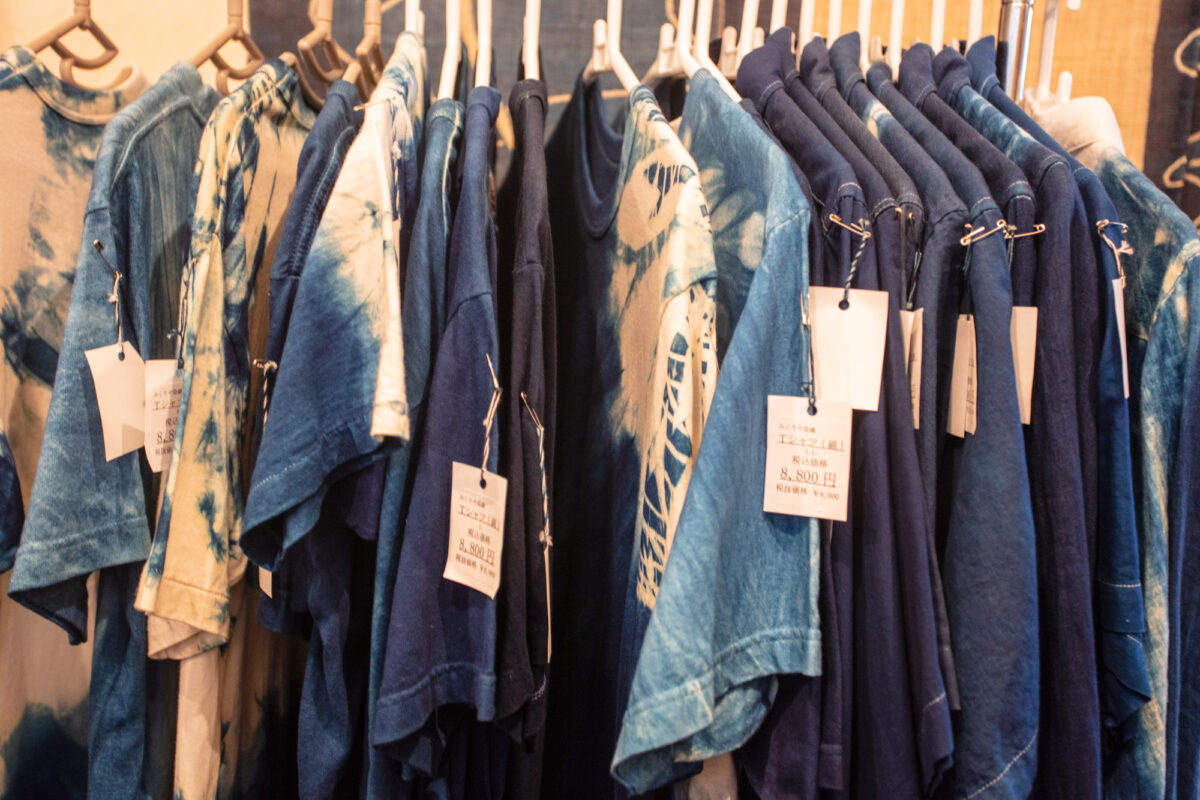
While the experience includes dyeing your own fabric to take back home with you, the atelier also features a showroom where visitors can buy the clothes masterfully dyed by the master and his son.
How to Book the Japan Blue Indigo Dyeing Experience
This experience can be booked for any day of the week. The meeting point is the Gotemba City Tourist Association, which is located right behind the west exit of Gotemba train station, accessible from Tokyo Station with a 2-hours train ride. The atelier is ten minutes walking distance from the tourist association. The atelier visit takes around 70 minutes and is followed by a lunch that is also included in the price of the experience. For booking and pricing information, please visit this link.
How to Get to Gotemba from Tokyo
Local Numazu line of the Tokaido Line connects Tokyo Station to Kozu Station in 1-hour 12-minutes. From Kozu, visitors can take the Gotemba Line (Local Shizuoka) to travel to Gotemba (48-minutes) or take a shinkansen bullet train to Mishima Station and transfer to Tokaido Main Line to get to Numazu Station (1-hour 4minutes), and then take the Gotemba Line to arrive at Gotemba Station (34-minutes).
